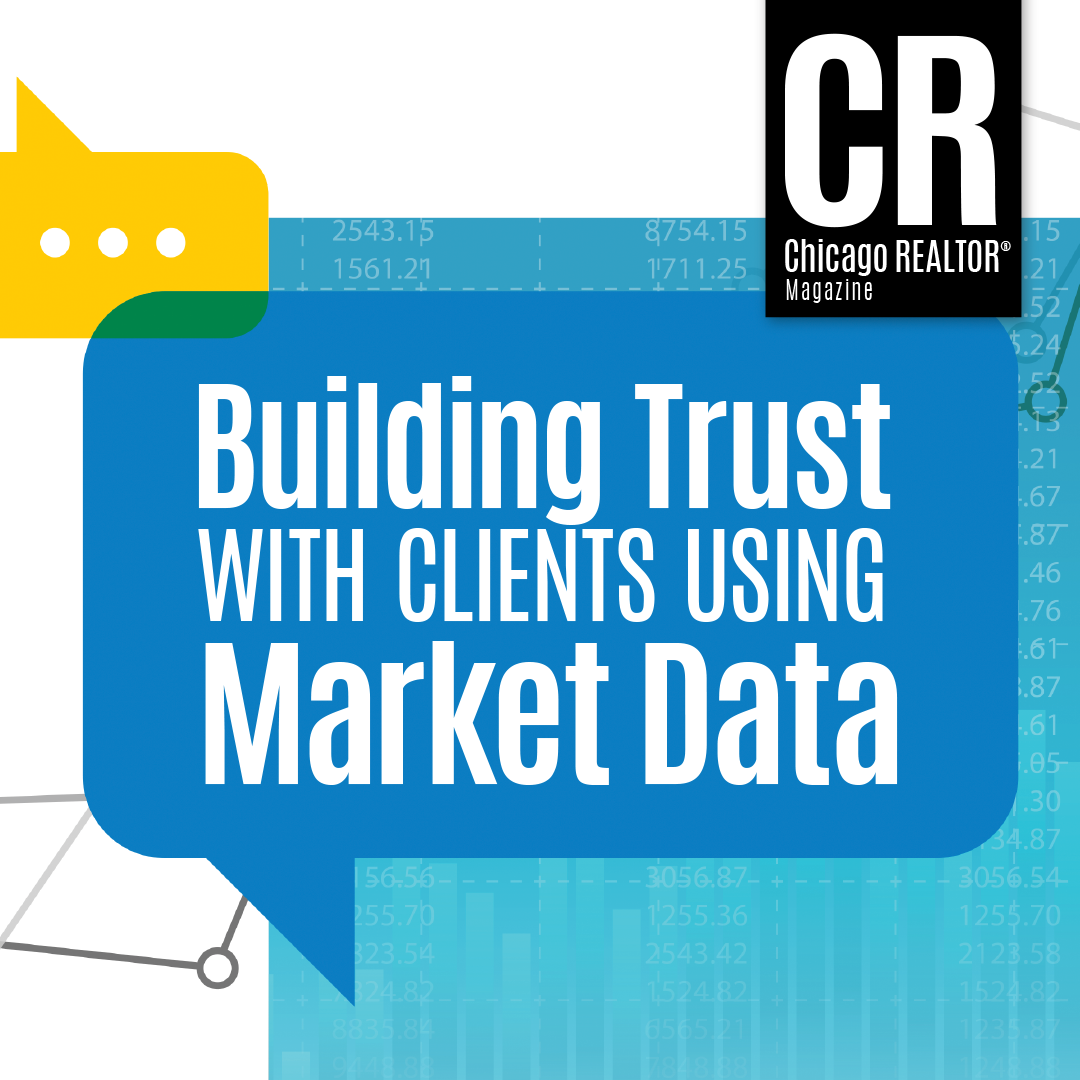The real estate market is constantly changing, especially over the last few years. As REALTORS®, you’re the trusted advisors for your homebuyers and sellers, so it’s vital that you’re armed with the knowledge you need to earn your client’s trust and to help them make informed decisions during the transaction.
One of the best ways to do this is to keep up with the market through trends and data. We spoke with two Chicago REALTORS® to find out how they use market data to inform their strategies with their clients for buying and selling homes.
CONTEXTUALIZING DATA
Media will never paint a full market picture. News articles and social media posts can exaggerate headlines about the housing market. Koi Tasaniyom, CENTURY 21 S.G.R., aims to cut through the noise and provide straight-forward, localized information his clients need to know.
Tasaniyom starts his days by keeping an eye on the headlines, particularly on topics such as interest rates, political news and anything else that might be of note. His strategy helps him anticipate questions that may come up from his clients.
Then, he looks at InfoSparks and FastStats– both member perks you can access for free with your Chicago Association of REALTORS® membership – to get a more local, granular look at the market. Through these tools, he is able to get data as specific as he wants, down to the neighborhood, and choose the data points to share with clients, from market price to market time and anything in between.
USING THE DATA DURING THE TRANSACTION
With each of his sellers, Tasaniyom creates a uniquely tailored listing presentation, which features a breakdown of InfoSparks data for their neighborhood. This acts as the first piece of data that he uses to discuss the state of the market and what to expect during the selling process.
Lisa Blume, Keller Williams ONEChicago, echoes the same sentiment, saying that she shares neighborhood-specific data with both her buyers and sellers to inform them of what’s happening in the market. “We really look at data when we set our price,” she said.
As his client’s trusted advisor, Tasaniyom uses the neighborhood’s median sales price, market time and months’ supply of inventory as important markers when pricing a home. Once his clients get farther in the transaction, the data acts as support for his suggestions for a listing strategy, so his clients can make an informed decision on a price.
As the market has recently begun to stabilize since the COVID-19 pandemic, Tasaniyom will typically look back at three years of data trends to best advise his clients, since the years during the pandemic may not be the best indicators of what his clients can expect from the market right now. He also makes sure to gather comps, and the median sales prices for those properties, from the last six months.
Here are the top five data points Blume and Tasaniyom believe are the most important and impactful when talking to his clients:
- Median Sales Price: It’s important to gather both the median for the neighborhood as a whole, as well as the median for comps to get a good idea of how to price a property.
- Market Time: This is a good indicator so clients can anticipate when their property will go under contract.
- Months’ Supply of Inventory: Looking at inventory, combined with closed sales, will show what demand looks like in the market.
- Closed Sales: This indicator helps to show demand and, when looked at by neighborhood, can help to build confidence in the market for the area.
- Showings: According to Blume, if we see showings go up, we will likely also see time on the market increase. Letting her clients know about the showing statistics allows her to set and manage her sellers’ expectations before they list a property.
Since these data points aren’t readily available to the public, Tasaniyom believes sharing his knowledge with clients proves his professionalism and expertise.
He hopes that all this information will help his clients make the best decisions on selling their home because, “At the end of the day, it’s not the decision of us to make, but the decision of the client,” he says. When it comes to buyers, Blume shares median sales price, days on the market, absorption rate, showings and inventory with her clients. This information helps her and her clients inform their buying strategy.
STAYING TOP OF MIND
Tasaniyom doesn’t just share this data with his current clients, he also makes sure to stay top of mind with his sphere of influence by sharing the data on social media. But, with the fast-paced way the market is shifting and changing, he chooses to share data and housing news on his Instagram and Facebook stories, as opposed to posting it on the grid. “The data today may not be relevant to the data tomorrow,” he said.
Blume and her team, on the other hand, have standardized the way they share data through social media to consistently provide information for her current and potential clients. Blume, and each REALTOR® on her team, has picked five neighborhoods in Chicago that they each share data on every month. They decide which neighborhood to highlight based on the areas they specialize in. Then, they post-market data graphics on their social media platforms each month, right when the new data is released.
Every month, Blume and her team also create and send an e-newsletter to their sphere. In that newsletter, they attach a Google Doc that includes data on 15 Chicago neighborhoods, so the information is also accessible right in their inboxes.







